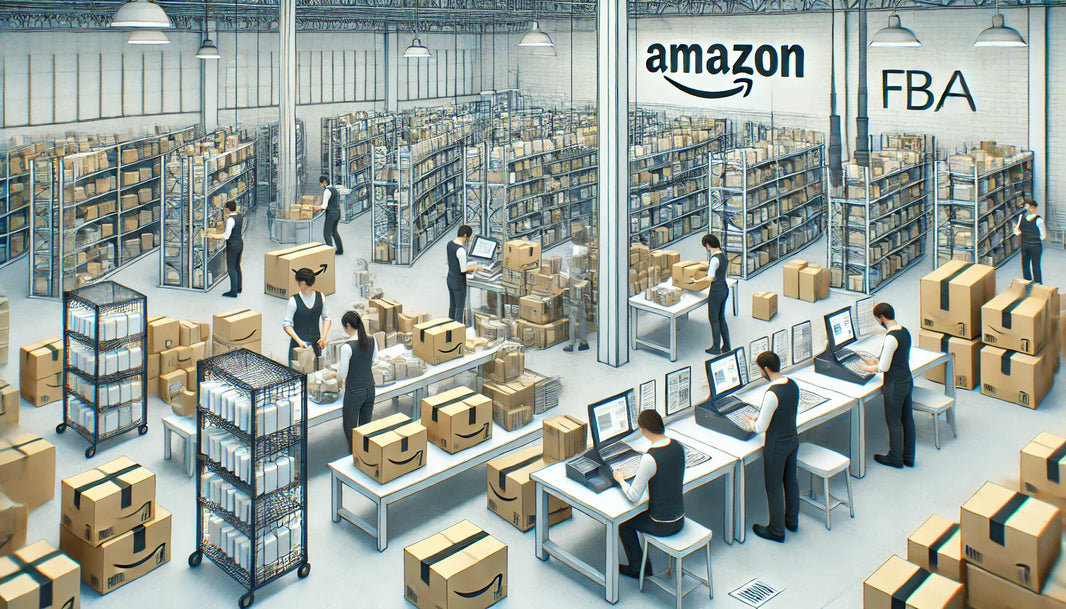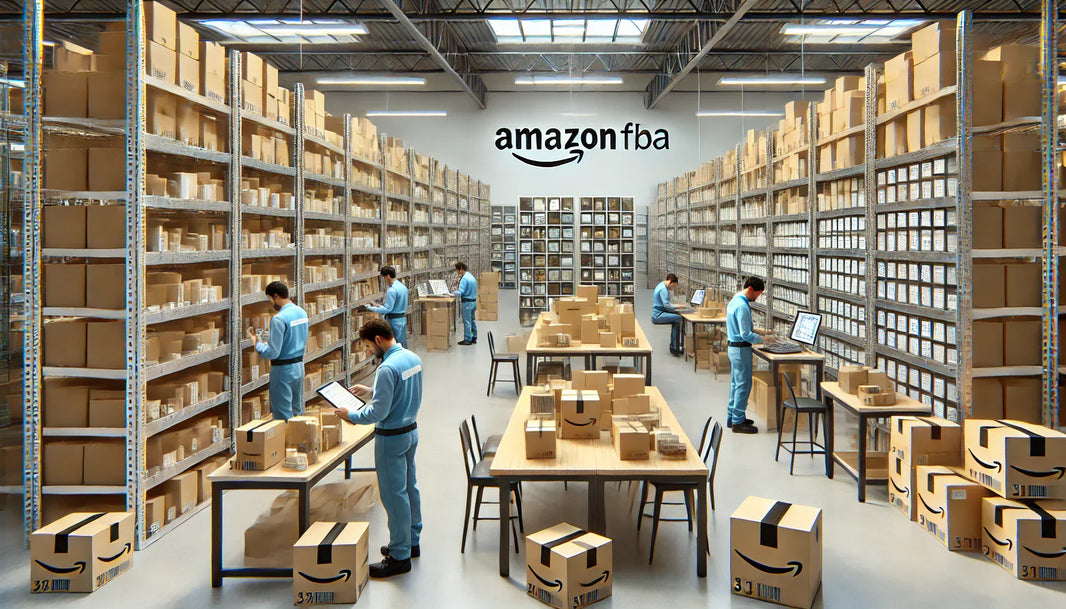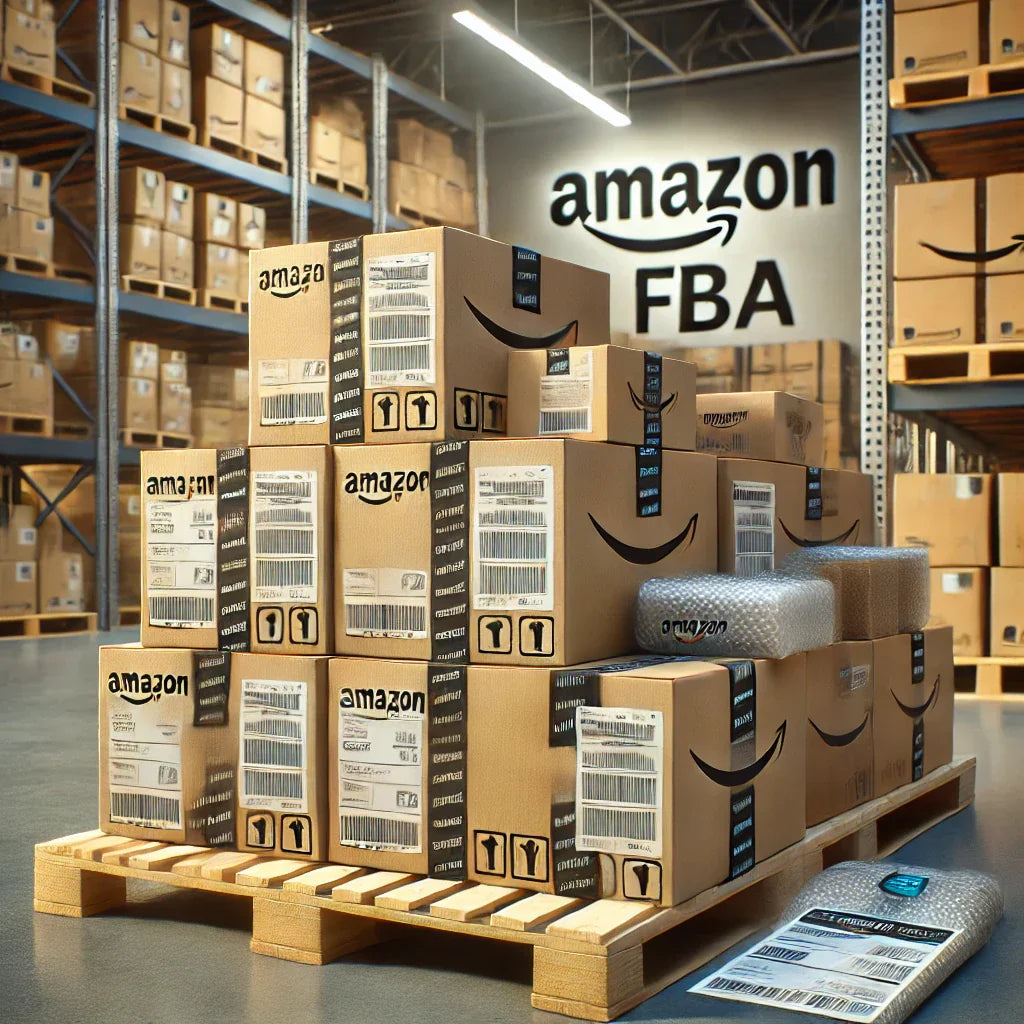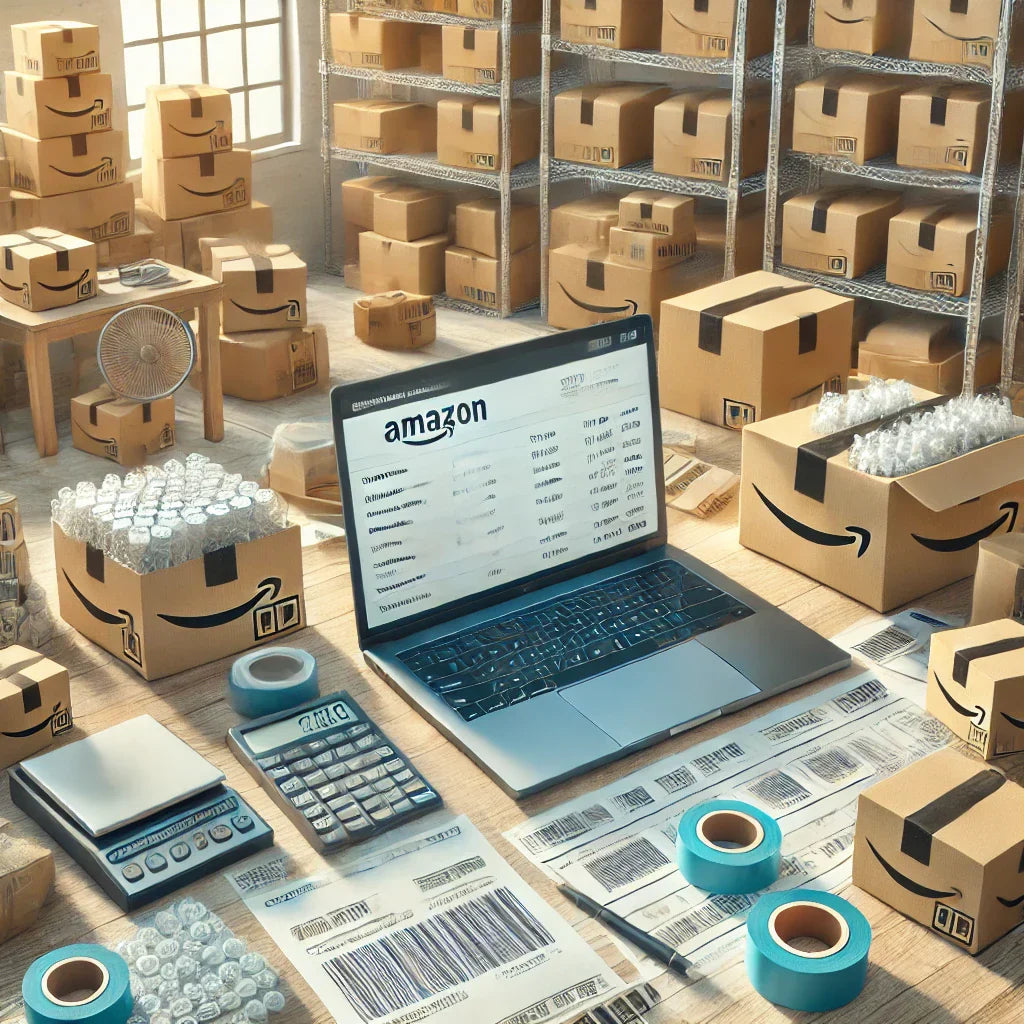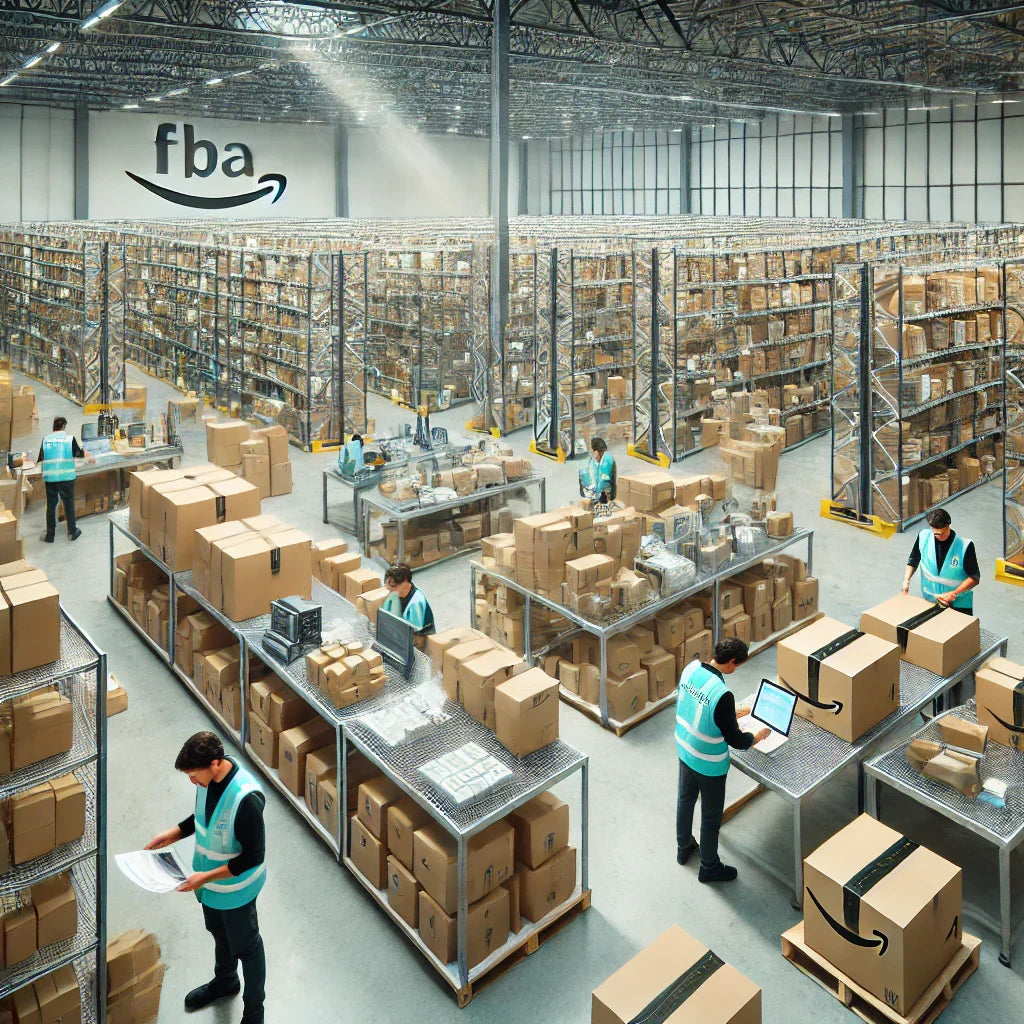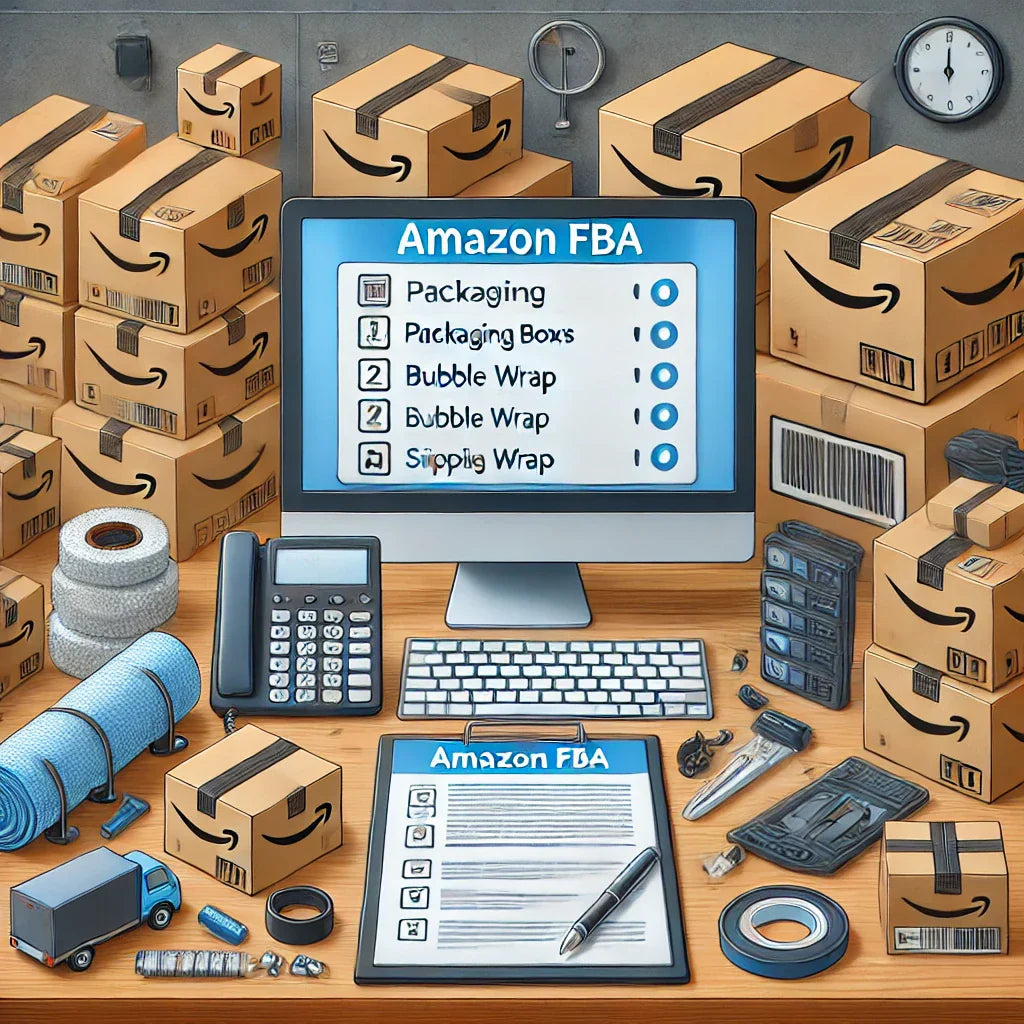In today’s interconnected global marketplace, the concept of distribution plays a pivotal role in ensuring that products reach consumers efficiently and effectively. Distribution encompasses the processes and strategies that enable the smooth movement of goods from manufacturers to end-users, whether through wholesale, retail, or direct channels. As businesses strive to meet evolving consumer demands, understanding the intricacies of distribution is crucial for optimizing supply chain operations and gaining a competitive edge. This blog post delves into the fundamental principles of distribution, explores key strategies to streamline processes, and examines the challenges companies must navigate to stay ahead in a rapidly changing landscape.

The Core Principles of Distribution
Distribution, at its essence, refers to the system and processes used to get goods from the point of production to the consumer. This system is foundational to the efficiency of any supply chain. A robust understanding of these principles can help businesses make informed decisions to maximize profit while satisfying customer needs.
- Importance of Distribution in Supply Chains Distribution is not just about transportation and logistics; it involves coordinating storage, inventory management, order fulfillment, and the choice of distribution channels. A well-structured distribution network can make or break a company's ability to meet market demand efficiently. Understanding these components allows companies to deliver products on time, maintain lower costs, and ensure customer satisfaction.
- Types of Distribution Channels Distribution channels can be direct or indirect, each serving distinct roles within the broader supply chain.
- Direct Distribution: This involves selling products directly to consumers without intermediaries. Companies like Apple have perfected direct distribution through their retail stores and online platforms, providing greater control over brand experience and customer service.
- Indirect Distribution: In this model, intermediaries like wholesalers, distributors, and retailers help bridge the gap between manufacturers and consumers. This approach is widely used for products that require wider reach or specialized retail experiences, such as food and beverage or consumer electronics.
Understanding which channel suits your business is crucial. Factors like product type, target audience, and logistics capabilities play a significant role in choosing the right distribution strategy.
Key Distribution Strategies
Developing an effective distribution strategy is essential to maintaining competitive advantage and ensuring market penetration. Companies must evaluate their objectives and understand the unique dynamics of their industry to craft a tailored approach.
- Intensive Distribution Strategy This strategy focuses on maximizing product availability across as many outlets as possible. It is commonly used for fast-moving consumer goods (FMCGs) like beverages, snacks, and personal care items. The goal is to make the product available to consumers whenever and wherever they wish to purchase it. However, this strategy can be expensive and requires efficient logistics and strong partnerships with retailers.
- Selective Distribution Strategy Unlike intensive distribution, a selective strategy involves choosing specific retailers to carry a product. This is often used for premium or specialty products that require a certain level of expertise or brand experience, such as high-end fashion or electronics. It allows companies to maintain brand integrity while still having a meaningful market presence.
- Exclusive Distribution Strategy This strategy involves granting exclusive rights to distribute a product within a specific region or through a particular retailer. It is commonly used for luxury brands and high-end automobiles. The advantage of exclusivity is the ability to maintain control over how the product is presented and priced, fostering an image of scarcity and prestige.
Challenges in Distribution
Despite well-thought-out strategies, businesses often face numerous challenges in their distribution efforts. Addressing these hurdles is crucial to optimizing performance and sustaining long-term success.
- Managing Logistics and Transportation The complexity of modern logistics is a significant challenge for companies, especially those operating on a global scale. Issues like rising fuel costs, fluctuating regulations, and unpredictable disruptions (e.g., natural disasters or geopolitical events) can hinder transportation and delivery. Advanced technologies, such as artificial intelligence (AI) and the Internet of Things (IoT), are increasingly used to improve route planning, monitor shipments in real-time, and forecast potential delays.
- Balancing Inventory Levels Effective inventory management is vital for meeting consumer demand while minimizing holding costs. Overstocking can lead to increased expenses and potential wastage, while understocking risks lost sales and customer dissatisfaction. Companies use sophisticated inventory systems, such as Just-In-Time (JIT) and demand forecasting software, to optimize stock levels and ensure seamless distribution.
- Adapting to Consumer Expectations Consumer expectations have evolved dramatically with the rise of e-commerce. Today’s customers demand fast, reliable, and flexible delivery options, putting pressure on companies to innovate continuously. Businesses must invest in advanced fulfillment centers, last-mile delivery solutions, and omnichannel strategies to meet these expectations.
- Navigating Supply Chain Disruptions Global supply chains are vulnerable to disruptions caused by geopolitical tensions, natural disasters, and global pandemics. The COVID-19 pandemic, for example, revealed the fragility of many supply chains and underscored the need for resilience. Companies are now diversifying suppliers, localizing production, and using digital tools to anticipate and mitigate risks.
Emerging Trends in Distribution
As the business landscape evolves, distribution strategies are also undergoing significant transformations. Staying updated on emerging trends is essential for companies looking to maintain a competitive edge.
- The Rise of E-commerce and Omnichannel Distribution E-commerce has revolutionized how products are distributed, leading to the development of omnichannel strategies that integrate physical and online sales channels. Retailers are now leveraging fulfillment centers, click-and-collect options, and seamless return processes to enhance customer experiences. The integration of digital and physical distribution channels has become a non-negotiable aspect of modern commerce.
- Automation and Robotics Automation is transforming warehouses and distribution centers by improving efficiency and accuracy. Automated guided vehicles (AGVs), robotic picking systems, and automated inventory tracking are just a few examples of how technology is reshaping distribution. These innovations reduce human error, speed up order fulfillment, and lower operational costs.
- Green Logistics and Sustainability Sustainability is no longer just a buzzword but a key consideration in distribution strategies. Companies are investing in electric delivery vehicles, optimizing packaging to reduce waste, and selecting environmentally friendly transportation modes. Consumer demand for green practices has pushed businesses to develop more sustainable supply chains, often using carbon offset programs to achieve environmental goals.

Case Studies: Successful Distribution Models
Examining successful distribution models can provide valuable insights into best practices and strategies that work.
- Amazon’s Fulfillment Network Amazon’s fulfillment network is a prime example of an efficient, tech-driven distribution system. The company has built a vast infrastructure of warehouses and delivery networks that leverage robotics, machine learning, and data analytics to optimize inventory management and speed up delivery. Its use of predictive analytics allows Amazon to anticipate demand and position products in warehouses closer to customers, reducing delivery times and enhancing customer satisfaction.
- Zara’s Supply Chain Model Zara, a global fashion retailer, has revolutionized the apparel industry with its agile supply chain and distribution model. By producing in small batches and keeping inventory levels low, Zara can respond swiftly to changing fashion trends. Its distribution system relies on centralized logistics hubs and frequent restocking, enabling stores to receive new products twice a week. This approach ensures that Zara’s offerings remain fresh and aligned with current consumer demands.
Strategies for Improving Distribution Efficiency
Efficiency in distribution can significantly impact a company's profitability and market competitiveness. Here are some proven strategies to streamline distribution processes:
- Leveraging Data Analytics Data analytics play a crucial role in optimizing distribution. Companies can analyze consumer purchasing patterns, seasonal trends, and logistics performance to make informed decisions. Predictive analytics tools help businesses forecast demand accurately, manage inventory efficiently, and reduce waste.
- Implementing Advanced Warehouse Management Systems (WMS) A WMS helps automate warehouse operations, from inventory tracking to order picking and shipping. By using barcodes, RFID technology, and real-time data, companies can ensure that products are always in the right place at the right time. WMS also improves labor management and enhances the overall efficiency of distribution centers.
- Strengthening Partnerships with Third-Party Logistics (3PL) Providers Outsourcing logistics to 3PL providers can help companies focus on core competencies while benefiting from the expertise of logistics specialists. 3PL partners offer services such as transportation, warehousing, and order fulfillment, often with advanced technology solutions. Collaborating with the right 3PL provider can enhance scalability and improve delivery speeds.
The Role of Technology in Modern Distribution
Technology is at the heart of modern distribution strategies, driving efficiency, and innovation. From artificial intelligence to blockchain, the digital transformation of distribution has opened new avenues for growth.
- Internet of Things (IoT) IoT technology enables real-time tracking of shipments, inventory, and equipment, providing valuable insights into supply chain operations. Smart sensors can monitor the condition of perishable goods, ensuring quality throughout transit. Additionally, IoT-based systems improve route optimization by offering live traffic updates, reducing delays and fuel consumption.
- Artificial Intelligence (AI) and Machine Learning AI algorithms are used to analyze vast amounts of data and optimize supply chain processes. Machine learning models can predict demand fluctuations, enhance warehouse operations, and automate repetitive tasks. Chatbots powered by AI also assist in improving customer service by providing real-time support for order inquiries and tracking.
- Blockchain for Transparency and Security Blockchain technology is being adopted to increase transparency and security in supply chains. By creating immutable records of transactions, blockchain ensures that all stakeholders have access to accurate and verifiable data. This technology is particularly beneficial for tracking the origin of products and preventing counterfeit goods in sectors like pharmaceuticals and luxury items.
Building a Resilient Distribution Network
In the face of increasing global uncertainties, building a resilient distribution network has become a strategic imperative for companies. Resilient distribution networks are characterized by their ability to adapt to disruptions while maintaining operational efficiency. This capability is crucial for minimizing the impact of events such as natural disasters, geopolitical instability, or unforeseen demand surges.
- Diversification of Suppliers and Partners One of the most effective strategies for building resilience is diversifying suppliers and partners. By sourcing raw materials and products from multiple suppliers across different regions, businesses can mitigate risks associated with dependency on a single source. Companies like Apple and Toyota have embraced this approach to ensure continuity in the face of disruptions. Additionally, maintaining a strong network of logistics partners helps companies adapt quickly to changing transportation and storage needs.
- Implementing Redundant Infrastructure Redundancy involves having backup systems and processes in place to ensure continuity during disruptions. For example, companies can invest in additional warehouse facilities or establish partnerships with third-party logistics providers that can step in when primary facilities are compromised. Although redundancy may increase operational costs, it can be a valuable insurance policy against major supply chain interruptions.
- Developing Contingency Plans Proactive planning is essential for maintaining distribution efficiency during emergencies. Businesses should develop detailed contingency plans that outline steps to be taken in various crisis scenarios. This includes defining roles and responsibilities, establishing communication protocols, and identifying alternative transportation routes. Regularly testing these plans through simulation exercises ensures that the organization is prepared for real-world disruptions.
The Human Element in Distribution
While technology and automation are transforming the distribution landscape, the human element remains an essential component of successful supply chain management. Skilled personnel are needed to oversee complex operations, make strategic decisions, and handle exceptions that automated systems cannot.
- Training and Development Programs Investing in the training and development of employees is critical for maintaining an efficient distribution operation. Warehouse workers, for example, need to be trained in the use of advanced warehouse management systems (WMS) and safety protocols. Similarly, logistics managers must stay up-to-date with the latest trends in transportation management and supply chain optimization. Continuous education and skills enhancement enable employees to work more effectively and adapt to new technologies.
- Employee Engagement and Retention High employee turnover can significantly disrupt distribution operations, leading to inefficiencies and increased costs. Companies should focus on employee engagement strategies to retain talent and foster a positive work environment. Offering competitive compensation, recognizing employee contributions, and providing opportunities for career advancement are effective ways to keep the workforce motivated. Additionally, fostering a culture of safety and well-being can enhance job satisfaction and reduce absenteeism.
The Role of Consumer Behavior in Shaping Distribution
Consumer behavior has a profound impact on distribution strategies. As consumer preferences evolve, companies must adapt their distribution models to meet new demands, such as faster shipping times, sustainable practices, and personalized shopping experiences.
- The Demand for Faster and Flexible Shipping The rise of e-commerce has conditioned consumers to expect same-day or next-day delivery. Companies like Amazon and Walmart have raised the bar for delivery speed, forcing other retailers to rethink their distribution strategies. To keep up, businesses are investing in strategically located fulfillment centers, leveraging local delivery networks, and using advanced route optimization software. Some companies are also experimenting with micro-fulfillment centers, which use automation to process orders quickly in urban areas.
- Sustainability and Eco-Friendly Distribution Sustainability is no longer optional for companies that wish to stay relevant in today’s market. Consumers are increasingly prioritizing eco-friendly practices, and this extends to how products are delivered. Businesses are responding by adopting green logistics practices, such as using electric delivery vehicles, optimizing delivery routes to reduce fuel consumption, and offering carbon-neutral shipping options. In addition, some companies are exploring sustainable packaging solutions to minimize waste and appeal to environmentally conscious customers.
- The Growth of Direct-to-Consumer (DTC) Models The direct-to-consumer (DTC) model has gained popularity in recent years, as brands look to build stronger connections with their customers and control the entire customer experience. By bypassing traditional retail channels, companies can reduce costs, collect valuable consumer data, and offer personalized service. However, this model also presents distribution challenges, such as the need to manage returns efficiently and maintain high levels of customer service.

Advanced Distribution Technologies and Innovations
Emerging technologies are reshaping the distribution landscape, enabling companies to operate more efficiently and respond to market changes in real-time. From robotics to blockchain, these innovations are driving the future of distribution.
- Autonomous Vehicles and Drones Autonomous delivery vehicles and drones are no longer a futuristic concept but a reality that is slowly being integrated into logistics operations. Companies like FedEx and UPS are testing autonomous delivery solutions to reduce labor costs and improve delivery speed. Drones, in particular, are being used for last-mile deliveries in remote or congested urban areas. While regulatory hurdles and safety concerns remain, the potential of these technologies to revolutionize distribution cannot be underestimated.
- Predictive Analytics and Demand Forecasting Predictive analytics tools use machine learning algorithms to analyze historical data and predict future demand patterns. These tools help companies optimize inventory levels, plan distribution routes, and anticipate potential disruptions. For example, retailers can use predictive analytics to prepare for seasonal spikes in demand or adjust stock levels based on changing consumer trends. By leveraging data-driven insights, businesses can make more informed decisions and reduce inefficiencies in their distribution networks.
- Warehouse Robotics and Automation Warehouse automation is becoming increasingly sophisticated, with robots capable of performing tasks such as picking, packing, and sorting with high precision. Automated guided vehicles (AGVs) transport goods within warehouses, while robotic arms handle heavy lifting and assembly tasks. These technologies improve efficiency, reduce labor costs, and minimize errors. Furthermore, robotic process automation (RPA) is being used to streamline administrative tasks, such as inventory management and order processing.
- The Role of Artificial Intelligence (AI) AI is transforming distribution by enabling smart decision-making and optimizing complex processes. AI-powered systems can analyze large volumes of data to identify patterns, predict demand, and optimize routes. For instance, AI can suggest the most efficient transportation methods or recommend which products to prioritize in a shipment. In addition, AI-driven chatbots are being used to provide real-time customer support, answer queries, and handle complaints.
Sustainability in Distribution: A Strategic Imperative
Sustainability has become a key focus for companies looking to reduce their environmental footprint and meet consumer expectations. The transportation and logistics sector, in particular, has a significant impact on carbon emissions, making sustainable practices essential.
- Carbon Footprint Reduction Reducing carbon emissions is a top priority for many companies. Strategies include investing in alternative fuel vehicles, using renewable energy sources for warehouses, and implementing energy-efficient practices. Some companies are also exploring the use of hydrogen fuel cells for long-haul trucks, which produce only water as a byproduct. By reducing their carbon footprint, companies not only contribute to environmental conservation but also appeal to eco-conscious consumers.
- Sustainable Packaging Solutions The increase in online shopping has led to a rise in packaging waste, prompting companies to explore sustainable alternatives. Biodegradable materials, reusable packaging, and minimalistic designs are being adopted to reduce environmental impact. Companies are also educating consumers about recycling and offering incentives for returning used packaging. These efforts align with broader corporate social responsibility (CSR) initiatives and help build a positive brand image.
- Reverse Logistics and Circular Supply Chains Reverse logistics involves the process of returning products from customers back to the company for recycling, refurbishing, or disposal. It is an essential component of a sustainable supply chain, as it promotes resource efficiency and reduces waste. Circular supply chains, which emphasize recycling and reusing materials, are becoming more popular as companies look to minimize their environmental impact. Implementing reverse logistics requires efficient tracking systems and a robust infrastructure to handle returned goods.
Globalization and Its Impact on Distribution
Globalization has transformed the way goods are distributed, creating both opportunities and challenges for companies. While it has enabled businesses to reach new markets and access a wider pool of suppliers, it has also introduced complexities in managing global supply chains.
- Access to New Markets One of the main advantages of globalization is the ability to expand into new markets and reach a global customer base. Companies can leverage distribution networks to sell their products internationally, increasing revenue and brand recognition. However, entering new markets requires a deep understanding of local regulations, cultural differences, and consumer preferences. Businesses must adapt their distribution strategies to each market to ensure success.
- The Complexity of Cross-Border Logistics Cross-border logistics involves navigating customs regulations, managing tariffs, and dealing with language barriers. Companies must also contend with longer lead times and the risk of goods being delayed at ports. To streamline cross-border distribution, businesses are adopting digital trade platforms that provide real-time tracking, automate documentation, and facilitate communication between stakeholders. Additionally, building relationships with reliable international logistics partners is crucial for minimizing disruptions.
- The Impact of Trade Policies and Geopolitical Risks Trade policies and geopolitical tensions can have a significant impact on distribution. Tariffs, trade wars, and sanctions can disrupt supply chains and increase costs for businesses. Companies must stay informed about changes in trade regulations and develop contingency plans to mitigate risks. Some businesses are also adopting a "China-plus-one" strategy, which involves diversifying their supply base beyond China to reduce exposure to geopolitical risks.
Collaborative Distribution Models
Collaboration in distribution is becoming increasingly important as companies seek to optimize resources and improve efficiency. Collaborative distribution models involve partnerships between businesses to share transportation, warehousing, and logistics assets.
- Shared Warehousing Shared warehousing is a cost-effective solution, especially for small and medium-sized enterprises (SMEs) that may not have the resources to invest in dedicated distribution centers. By pooling resources, companies can benefit from economies of scale, reduced storage costs, and increased flexibility. For instance, during peak seasons, shared warehouses can accommodate higher inventory levels for multiple businesses, mitigating the impact of fluctuating demand. Additionally, this approach fosters collaboration among companies, which can lead to innovative solutions in managing inventory and optimizing logistics.
- Collaborative Transportation Networks Another aspect of collaborative distribution is the formation of transportation networks that enable multiple companies to share freight shipments. By consolidating loads and utilizing fewer trucks, businesses can lower transportation costs and reduce their carbon footprint. Collaborative transportation networks are particularly beneficial for companies that ship goods to similar geographic locations. Advances in logistics technology, such as transportation management systems (TMS) and real-time tracking, make it easier to coordinate shared deliveries, optimize routes, and improve efficiency. This model also helps minimize empty miles, where trucks travel without cargo, thereby enhancing sustainability.
- Co-opetition in Supply Chains The concept of "co-opetition," a blend of cooperation and competition, is gaining traction in the supply chain world. Even companies that are competitors in the marketplace are finding value in collaborating on specific aspects of their distribution operations. For example, competing grocery retailers may share warehouse facilities or jointly invest in cold chain logistics to reduce costs. This approach allows companies to leverage shared infrastructure while still competing on product offerings and customer service. Effective co-opetition requires transparency, trust, and mutually beneficial agreements to ensure that all parties gain value from the collaboration.

Regional Distribution Strategies
As businesses expand their reach, developing tailored regional distribution strategies becomes increasingly important. Regional strategies account for variations in consumer behavior, infrastructure, and regulatory environments, ensuring that goods are distributed efficiently and cost-effectively.
- Understanding Regional Market Dynamics Different regions have unique characteristics that impact distribution. For instance, densely populated urban areas may require a different approach compared to rural regions. In urban areas, businesses may rely on smaller delivery vehicles and micro-fulfillment centers to navigate traffic congestion and meet consumer expectations for fast delivery. In contrast, rural regions may require longer lead times and more flexible delivery options. By understanding these dynamics, companies can design distribution strategies that are better suited to local conditions.
- Leveraging Regional Distribution Centers Establishing regional distribution centers (RDCs) is a common strategy for improving delivery speed and reducing transportation costs. RDCs are strategically located facilities that store inventory closer to key markets. This approach not only shortens delivery times but also allows companies to respond quickly to changes in demand. For example, a retailer with RDCs spread across the country can ensure that products are always available to customers within a specific radius. RDCs also provide a buffer in case of supply chain disruptions, as inventory can be redistributed to different locations as needed.
- Adapting to Local Regulations and Infrastructure Compliance with local regulations is a critical aspect of regional distribution strategies. This includes adhering to labor laws, safety standards, and environmental regulations that may vary from one region to another. Infrastructure also plays a key role in distribution planning. In some regions, poor road conditions or limited access to transportation networks may require creative solutions, such as using drones or river transport. Companies must stay informed about local policies and infrastructure developments to optimize their distribution strategies and avoid legal complications.
Future Trends in Distribution
The distribution landscape is continuously evolving, driven by advancements in technology, changing consumer preferences, and environmental concerns. Staying ahead of these trends is crucial for businesses looking to remain competitive and resilient.
- The Impact of Artificial Intelligence and Machine Learning AI and machine learning are becoming integral to distribution operations. These technologies can analyze vast amounts of data to improve demand forecasting, optimize inventory management, and streamline route planning. For instance, machine learning algorithms can predict which products are likely to sell in specific regions based on historical data and external factors like weather or economic conditions. AI can also enhance warehouse operations by automating the sorting and picking of goods, reducing human error, and speeding up the fulfillment process. As AI capabilities continue to improve, we can expect even more sophisticated applications in distribution.
- The Rise of Hyperlocal Distribution Hyperlocal distribution focuses on delivering goods within a very short distance from the point of sale to the consumer, often within hours. This trend is fueled by the growth of on-demand delivery services and consumer expectations for instant gratification. Retailers and e-commerce companies are investing in micro-fulfillment centers located in urban areas to enable faster delivery. These small, automated warehouses use advanced robotics to prepare orders quickly and efficiently. Additionally, partnerships with local delivery services, such as bicycle couriers and scooter fleets, help minimize delivery times and environmental impact.
- The Evolution of Last-Mile Delivery Solutions Last-mile delivery is one of the most challenging and costly aspects of distribution. Innovations in this area are focused on improving efficiency and meeting consumer expectations for speed and convenience. Autonomous delivery robots, drones, and parcel lockers are being tested and implemented to streamline last-mile delivery. For example, companies like Starship Technologies are deploying autonomous robots to deliver food and small packages in urban environments. Similarly, Amazon’s Prime Air service is exploring the use of drones to deliver packages within 30 minutes. These solutions not only enhance delivery speed but also reduce labor costs and traffic congestion.
- The Shift Towards a Circular Economy The concept of a circular economy is reshaping how companies approach distribution and logistics. In a circular economy, products are designed to be reused, repaired, or recycled, minimizing waste and conserving resources. Distribution plays a crucial role in this model by enabling the reverse flow of goods for recycling or refurbishment. Companies are investing in reverse logistics systems to efficiently handle returns and manage the lifecycle of products. Additionally, partnerships with recycling facilities and refurbishers are becoming more common. By embracing circular economy principles, businesses can reduce their environmental impact and appeal to sustainability-minded consumers.
Advanced Analytics and Data-Driven Decision Making
Data-driven decision-making is transforming distribution strategies, allowing companies to operate more efficiently and effectively. Advanced analytics tools provide insights that help businesses optimize every aspect of their supply chain.
- Real-Time Data and Supply Chain Visibility Having real-time visibility into the supply chain is essential for making informed decisions. Technologies such as GPS tracking, RFID tags, and IoT sensors provide up-to-the-minute data on the location and condition of goods. This information enables companies to monitor shipments, identify potential delays, and take corrective action immediately. Real-time data also helps businesses track inventory levels across multiple locations and allocate resources more efficiently. For example, if a distribution center is running low on a popular item, data analytics can trigger an automatic replenishment from the nearest warehouse.
- Predictive and Prescriptive Analytics While predictive analytics forecasts future outcomes based on historical data, prescriptive analytics goes a step further by recommending specific actions to achieve desired results. In distribution, these tools can be used to optimize route planning, reduce fuel consumption, and minimize delivery times. For instance, a logistics company can use prescriptive analytics to determine the best combination of routes and delivery schedules based on traffic patterns, weather conditions, and vehicle availability. This not only improves efficiency but also enhances customer satisfaction by ensuring timely deliveries.
- Leveraging Big Data for Customer Insights Understanding customer behavior is critical for designing effective distribution strategies. Big data analytics allows companies to gain insights into consumer preferences, buying patterns, and geographic trends. Retailers can use this information to stock the right products in the right locations, personalize marketing campaigns, and offer tailored delivery options. Additionally, analyzing customer feedback and return data can help businesses identify areas for improvement in their distribution processes. By leveraging big data, companies can stay ahead of consumer trends and deliver a superior customer experience.
The Importance of Agility and Flexibility in Distribution
Agility and flexibility are becoming increasingly important as businesses face rapidly changing market conditions and unpredictable disruptions. Companies that can adapt their distribution strategies quickly are better positioned to capitalize on opportunities and mitigate risks.
- Flexible Warehousing Solutions The rise of flexible warehousing models, such as on-demand warehousing, is enabling businesses to scale their operations up or down based on demand. On-demand warehousing platforms connect companies with available warehouse space, allowing them to adjust inventory storage as needed. This model is particularly useful for businesses with seasonal fluctuations or those entering new markets. By reducing the need for long-term warehouse leases, companies can lower costs and respond more nimbly to changes in consumer demand.
- Adapting to Supply Chain Disruptions The COVID-19 pandemic highlighted the importance of having flexible and resilient supply chains. Companies that were able to pivot quickly, such as switching suppliers or rerouting shipments, were more successful in navigating the crisis. To build flexibility, businesses are diversifying their supplier base, investing in digital supply chain tools, and developing contingency plans for different scenarios. Some companies are also adopting a "nearshoring" strategy, which involves sourcing materials and manufacturing products closer to their end markets to reduce lead times and mitigate risks.
- Dynamic Pricing and Inventory Management Dynamic pricing strategies allow companies to adjust prices in real-time based on factors like demand, inventory levels, and competitor activity. In distribution, dynamic pricing can be used to optimize the allocation of limited resources, such as warehouse space or delivery slots. For example, during peak periods, companies may charge higher prices for faster delivery options to manage demand and maximize revenue. Similarly, advanced inventory management systems can automatically adjust stock levels and reallocate products based on current sales trends and forecasted demand. These strategies help companies maintain profitability while meeting customer expectations.

Conclusion
In an increasingly interconnected and dynamic global market, understanding the core concepts and strategies of distribution is more crucial than ever. From selecting the appropriate distribution channels to leveraging advanced technologies and building resilient, flexible supply chains, companies must remain adaptive and forward-thinking to stay competitive. Collaborative models, regional strategies, and sustainability initiatives are transforming how goods move from manufacturers to consumers, while data-driven decision-making and the rise of automation are setting new benchmarks for efficiency. As consumer expectations evolve and technological advancements continue to shape the landscape, businesses that prioritize innovation and adaptability in their distribution strategies will be well-positioned for success. By investing in these approaches, companies can not only optimize operations but also deliver exceptional value to their customers, ensuring long-term growth and resilience in a rapidly changing world.
Read More
- The Role of Wholesale Distribution in Modern Supply Chains
- How to Optimize Distribution Channels for Your Business
- Distribution Challenges and How to Overcome Them
- The Evolution of Distribution Models in E-commerce
- Best Practices for Efficient Distribution Management
- How Technology is Transforming the Distribution Industry


